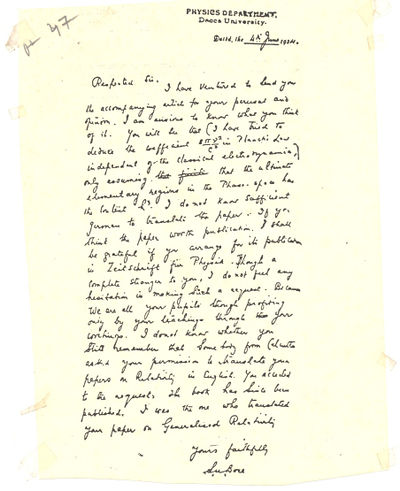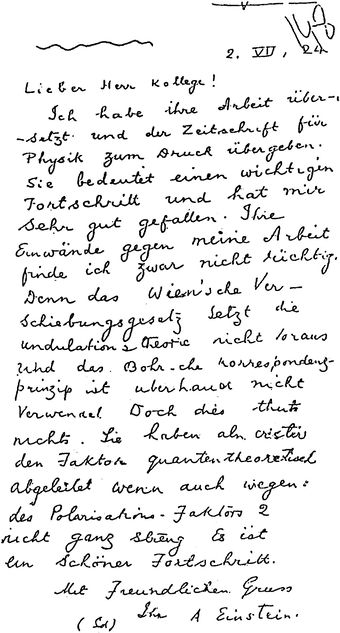Satyendra Nath Bose
Bose was an obscure young Indian physicist who got propelled to fame when Einstein personally translated his paper on the derivation of Planck's equation for blackbody radiation for Zeitschrift für Physik. This followed the failure of Bose to get published by himself (in the Philosophical Magazine) but he impressed Einstein enough with his manuscript, accompanied by this letter (date June (1924):

This is the reply that Einstein made to Bose:

There he confirms that the paper was translated (by himself!) and recommended [therefore accepted] for publication. He also made the following comment as the translator of this text:

Apparently, the translator also edited out Bose's observation of an intrinsic angular momentum (spin) taking two values, which was correct, to justify a factor 2 in the derivation of the total number of quantum states of radiation, that Einstein even later reproached to Bose as being not rigorously introduced (see below).
Before Bose even got a reply, he actually sent another text (and letter), this time on thermal equilibrium in radiation field in the presence of matter, revisiting the A and B Einstein coefficients. This is the reply he got from Einstein, who this time had a criticism on the results:

The critics can be discovered in the paper, just as Bose had to do.
Bose made a genius encounter but this was largely a lucky insight. He had no knowledge of "inventing a new type of statistics" and it was left to Dirac to fully understand the physical origin (symmetry of the wavefunction) and implication of his approach (in 1926). This is also Dirac, by the way, who christened bosons and the Bose-Einstein statistics. Bose's input was to derive Planck's law free from all assumptions of classical electrodynamics. Nowadays we regard Bose's paper as introducing quantum statistics. It did that insofar as the counting method amounts to counting all arrangements of a given number of phase points in
References
- A great resource is Wali's Satyendra Nath Bose — His life and times: selected works (with commentary) with original and translated papers, historical comments and a variety of material.
- Satyendranath Bose: Co-Founder of Quantum Statistics. W. A. Blanpied in Am. J. Phys. 40:1212 (1972). with delightful personal accounts of an interview with Bose.